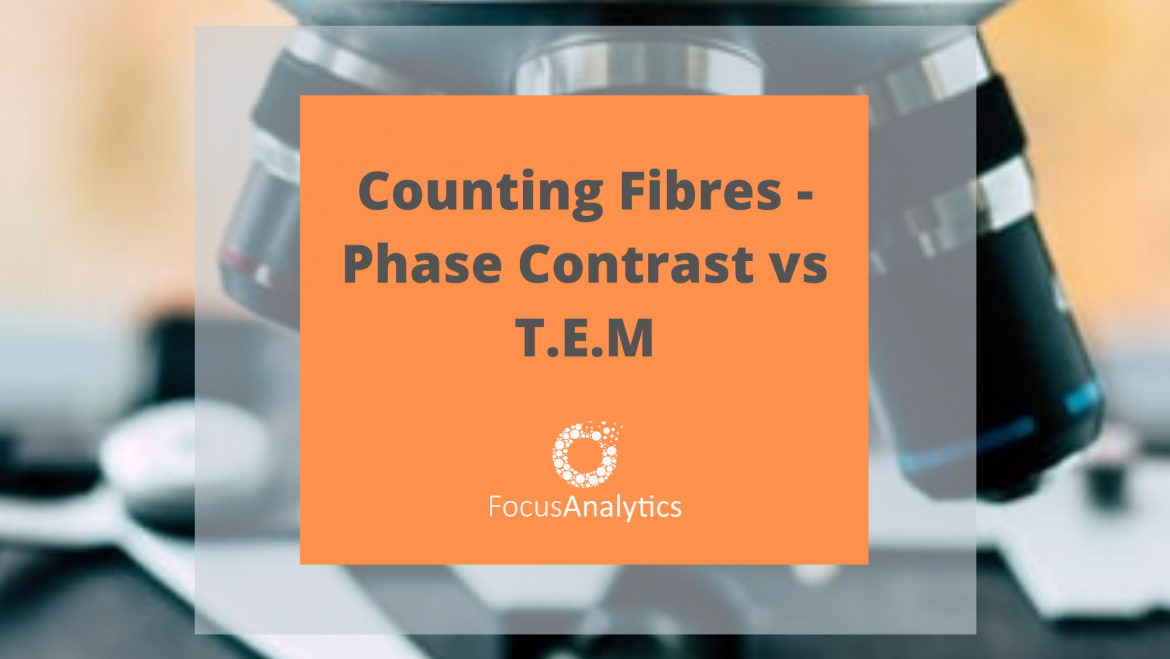In this month’s tech talk we are exploring the difference between two types of analytical techniques for counting airborne fibre concentrations, Phase Contrast Microscopy (PCM) and Trans Electron Microscopy (TEM). Even though both approaches attempt to quantify fibres, there are significant differences as well as situations when each should be employed.
PCM is the microscopy that is used to count “respirable” airborne fibres during typical asbestos air monitoring practices. The method used for this is the Membrane Filter Method (MFM) and looks to estimate the concentration of respirable fibres in an area over a period of time. A key aspect and downside with this method, is the uncertainty involved. The uncertainty is due to field sampling error (think pump flow rates and locations, dust clouds with high fibre density) as well as the potential uncertainty in the laboratory (microscope setup, analyst experience and the vast area that we don’t count under the microscope). Without going into too much detail, the MFM has the potential to have significant inaccuracy if done incorrectly in the field as well as the lab.
This is why it is very important to ensure your field staff are competent, as well as the lab analyst. Another very important point to understand is that under the phase contrast and the MFM, we cannot distinguish between asbestos and non-asbestos fibres if they fall into the countable criteria for “respirable fibres”
Again, without going into too much detail there is a criteria for counting respirable fibres and it is common for “non asbestos fibres” to fall into this category. Synthetic Mineral Fibre (SMF), organic fibre and other structures can and will be counted using this method. This can be particularly problematic in buildings/workplaces that are high in these types of fibres (commercial laundries or roof voids with SMF insulation). High counts over 0.01 fibres/ml of air (our exposure guideline) can be triggered by these fibre types in air. If this occurs over numerous sampling events, there maybe delays in works as well as intervention for the regulatory body. If this occurs, there are other options for a more “forensic based” approach to the airborne fraction and its makeup. Transmission Electron Microscopy or TEM is a high-powered microscope that can be utilised for this very situation.
As an overview, this approach has extremely high magnification so that the fibre shape and structure can be observed (morphology), as well as unique aspects of mineral makeup of the fibre (minerality). Electron microscopy is used rather than optical microscopy. The same filter as used with the MFM can be used with various methods utilising TEM – AHERA, ASTM, ISO. The filter is processed and the contents are placed on a microscopy grid before it is then coated with carbon or even coated in a gold film. From this point the structures are characterized by their morphology and elemental composition allowing for a calculation of concentration of a specific fibre type rather than all fibres.
There are clear benefits for each approach and at times should be used in tandem. PCM is a quick and relatively accurate (if done correctly) method for estimating fibre concentration. The equipment required is readily available in NZ, with numerous IANZ accredited facilities nationwide. TEM, on the other hand, is expensive and at the time of writing not available in New Zealand (though there are several options in the USA and an upcoming option in Australia). As mentioned, it is the “gold standard” when wanting to understand when airborne fibres are “asbestiform” or not. For projects that constantly have high fibre counts, with the source of contamination being ‘unknown’ the results from TEM can be extremely useful.
Focus Analytics conducted IANZ accredited PCM based airborne fibre counting at both our facilities. We also arrange for the transit and analysis of these filters if and when required.



